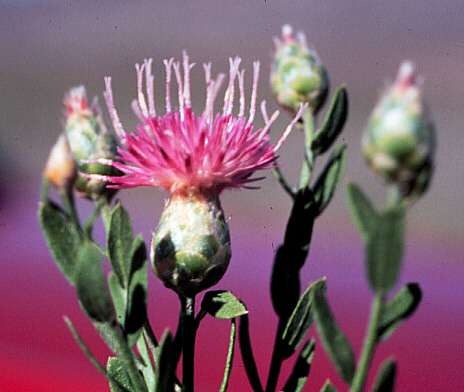Aggressive is an understatement
By Blaine Bug Crew
One of the first knapweed species to emerge in the spring is Russian knapweed. This plant is unique in that it is the only knapweed with black roots—making it easy to identify. This plant will take over entire areas, killing all other vegetation. Russian knapweed is aggressively growing in Gooding and Lincoln counties and if we are not vigilant it will try to establish itself in Blaine County. Here is what you need to look for.
Russian knapweed is a perennial plant that reproduces mainly by creeping roots. In addition, a single plant is capable of producing more than 1,200 seeds. These seeds vary in color from gray to ivory and are produced from August through September. The erect stems are openly branched and typically 45 to 90 cm tall. The leaves are oblong on the upper part of the plant and become deeply lobed the closer they are to the root crown. Russian knapweed produces many flowers, which range in color from pink to blue. Flowering typically begins in June and continues through September. Russian knapweed forms dense infestations across habitat types in the arid West. It is a significant pest of rangelands, roadsides, waste areas, and can invade grain and other crops.
In the following five years after initial release, the bug crew will monitor the insectory area in early spring when young Russian knapweed ripening shoots are the most susceptible to gall formation. Stands infested by Jaapiella ivannikovi (a gall midge) will be inspected for a reduction in vigor and biomass as well as reductions in stand density and extent. Monitoring data will be used to determine whether site conditions are suitable for Jaapiella ivannikovi insectories.
If you happen upon an infestation of Russian knapweed, it is imperative that you take action. Pull these plants if they are on your own property. If it is public land, please call Morgan Baird (208-788-5543) at the Blaine County Weed Department and she can determine the best path forward. It just might be that the Blaine Bug Crew may be able to use biological control insects to control the infestation.

